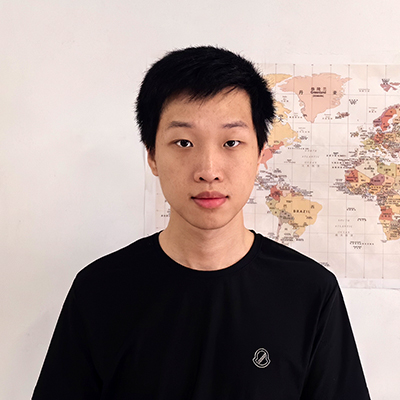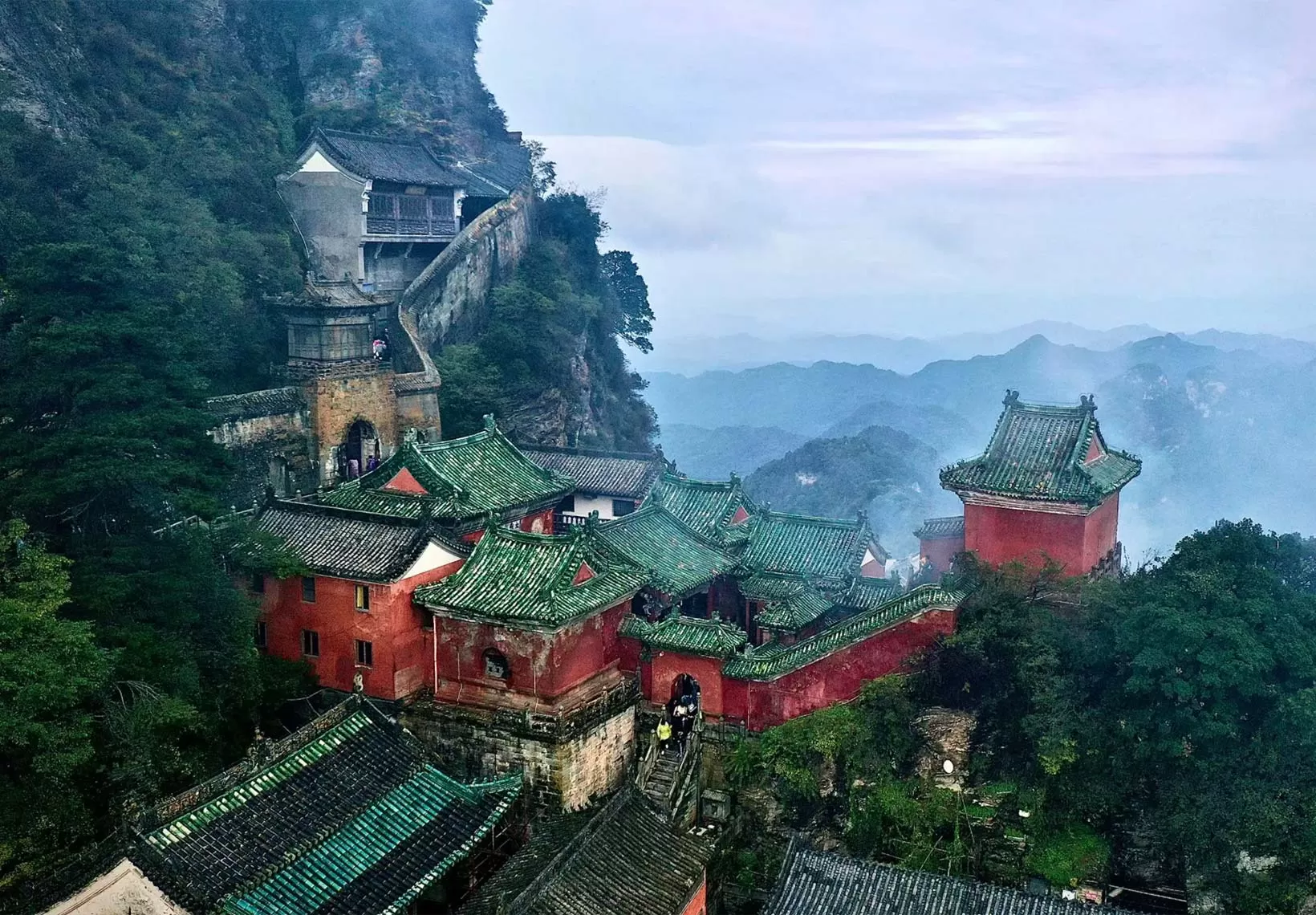Best Places to Visit in Hubei: Wuhan, Yichang, Enshi
Hubei, known as the Province of a Thousand Lakes, is a fertile land home to 17 distinctive cities, each like a vibrant calling card showcasing its unique charm. In Wuhan, you can gaze upon the grandeur of the Yangtze River Bridge and savor the historic aura of Yellow Crane Tower. Yichang pairs the magnificence of the Three Gorges Dam with the picturesque beauty of the Qingjiang Gallery. The ancient city of Xiangyang and the storied Longzhong echo with the weight of history, while Shiyan's Wudang Mountains and Shennongjia immerse visitors in the wonders of nature. Following are the best places to visit in Hubei.
Top 1: Wuhan
Wuhan is a city full of vitality, grand and ever-surging. Here, the Yangtze River meets the Han River, dividing the city into three parts and endowing it with a grandeur that seems to swallow mountains and rivers alike. As an important birthplace of Chu culture, Wuhan has given rise to countless magnificent legends.
Wuhan, also known as the "River City" like Chongqing, is the capital of Hubei Province and the central city of China's heartland. It sits in the eastern part of the Jianghan Plain along the middle reaches of the Yangtze River, where the Yangtze and its largest tributary, the Han River converge, forming the pattern of Wuhan Three Towns, Wuchang, Hankou, and Hanyang, standing across the rivers from one another. The city is crisscrossed with rivers and dotted with lakes and harbors, with water areas making up one quarter of its total area.
Wuhan is a land that nurtures outstanding people and fosters culture. Here stands the Yellow Crane Tower, praised as "the first tower under heaven", and the Wuhan Yangtze River Bridge, hailed as "the first bridge over the Yangtze". In spring, the cherry blossoms at Wuhan University bloom like rosy clouds; boating on East Lake, one finds ancient legends merging with misty waters. It was here that Zhong Ziqi and Yu Boya found a kindred spirit in each other; Qu Yuan walked by East Lake composing verses; and Li Bai bid farewell to Meng Haoran at Yellow Crane Tower. A stroll through Wuhan is to walk amidst history, where every glance reveals a story from the past.
Top 2: Yichang
The surging Yangtze River, carrying the winds and clouds from the Tanggula Mountains, cuts through waves and splits currents, charging past Kuimen, through Qutang, across Wuxia, and breaking through Xiling, before cascading down in Yichang, endowing it with the bold spirit of great rivers.
Yichang, historically known as "Yiling", taking the meaning of "here the waters become gentle, and the mountains become low". It is located in the southwest of Hubei Province, at the boundary between the upper and middle reaches of the Yangtze River. To the west it borders Chongqing, and to the east connects with Wuhan, lying at the junction of Hubei, Chongqing, and Hunan.
Here, the Yangtze Three Gorges and the Three Gorges Dam complement each other in splendor, while Ba-Chu culture and Tujia customs blend seamlessly. It was in these forests that Shennong once tasted hundreds of herbs, amid towering ancient trees and habitats of rare birds and beasts. This is the homeland of Qu Yuan, the founder of Chinese Romantic literature, and Wang Zhaojun, the ancient envoy of ethnic unity. From Lu Xun's fire attack on linked camps, to Zhao Yun's fierce fight at Changban Slope, and Zhang Fei's defiant roar at Dangyang Bridge, the land abounds with legendary tales and historical relics. It is also the resting place of Guan Yu's real body, home to the imposing Guan Emperor's Mausoleum.
Top 3: Enshi
Enshi, a hidden gem of a small city on the outskirts of Hubei, is blessed with enchanting mountains and rivers. The emerald Qingjiang River winds through the hills like silk, flanked by rows of striking peaks and coursing with surging waters. The marks of hundreds of millions of years have carved here one of China's most beautiful scenic corridors.
Enshi Tujia and Miao Autonomous Prefecture, located in the southwest of Hubei, borders Jing-Chu to the east, Xiaoxiang to the south, Qian-Gui to the west, and Shennongjia to the north. Rich in rivers and situated deep in the Wuling Mountains, it is a place where Ba culture, Tusi culture, and the customs of the Tujia and Miao peoples blend and flourish.
This land has unique karst landscapes with numerous caves, deep gorges, spectacular peaks, and dense forests. Among its lofty mountains lies the Enshi Grand Canyon, comparable to Colorado; the Qingjiang River weaves through mountains and valleys, creating an 800-li long natural gallery; Tenglong Cave stands the largest cave in Asia; and Yunlong Crevice casts the beautiful scars on the earth. The stilted houses of the Tujia and the wind-and-rain bridges of the Dong also add to Enshi's charm. Graced by nature with breathtaking beauty, Enshi waits hidden among towering mountains, ready for visitors to lift her mysterious veil.
Top 4: Shiyan
Shiyan is a city standing amid vast mountains and rivers. Misty expanses stretch far and wide, the Han River flows ceaselessly, and majestic peaks adorned with dense forests spread across the land.
Shiyan, known as the "Truck Capital of China", is located in the northwest of Hubei, in the middle and upper reaches of the Han River, nestled in the Han River Valley of the Qinba Mountains. It borders the Qinling Mountains to the north and leans against the Ba Mountains and Han River to the south, with Wudang Mountain spanning its entire territory. Wudang Mountain, the waters of the Han River, and its reputation as an automotive hub are Shiyan's three world-class calling cards.
Wudang Mountain, honored as a Taoist sacred land, is Shiyan's most dazzling cultural symbol. It is a dwelling place for immortals, Taoist priests, hermits, and Youxia, a mysterious realm where white-robed swordmen soar through forest mists and wander among temples and palaces. From afar, seventy-two peaks layer upon each other like an ink painting; up close, the Golden Hall glows brilliantly, the Zixiao Palace stands solemn and elegant, and the Nanyan Palace clings to sheer cliffs. Here is also home to Asia's largest artificial lake, the Danjiangkou Reservoir, the globally significant Yunxian Man site, and a rare hometown of dinosaurs.
Top 5: Xiangyang
The Han River flows steadily, the Jing Mountains stand tall. Over thousands of years, lofty green hills and ancient city walls have forged Xiangyang's heroic spirit. The rushing waters and bustling docks have nurtured the dreams of scholars and knights across the ages, shaping Xiangyang into a vital crossroads for seven provinces.
Xiangyang, lies in the northwest of Hubei at the middle reaches of Han River, bordering Yichang to the south and Shiyan to the west. It boasts a history of over 2,800 years, long regarded as an economic and military stronghold, celebrated as "China's first city fortress". Xiangyang is a cradle of Chu, Han, and Three Kingdoms culture, earning it titles such as "the iron bastion of Xiangyang", and "a strategic place contested by all".
The ancient city walls, formidable and unyielding, have stood for millennia. At longzhong, Liu Bei and Zhuge Liang laid grand plans. In Shuijing Village, Sima Hui's spirited discussions led to the famed three visits to the thatched cottage. On the Xiangfan battlefield, Guan Yu's flooding of the seven armies shook the entire realm. Here, the chivalric legends of unwavering loyalty, the Condor Heroes, and epic battles of Xiangfan come alive. Here, the historical echoes of the glorious Tang Dynasty City, Emperor Guangwu's hometown, and Mi Fu's ancestral hall whisper through time.
Top 6: Jingzhou
Jingzhou, historically known as Jiangling, is located in the south-central part of Hubei Province, in the heart of the Jianghan Plain along the middle reaches of the Yangtze River. Crisscrossed by numerous rivers and lakes, the region is rich in water resources. Jingzhou is the birthplace of both Chu and Three Kingdoms cultures and was once a major battlefield during the Three Kingdoms period. Known as the "Ancient Capital of Chu" and a "Famed City of the Three Kingdoms", Jingzhou served as the political center of Hubei before the rise of Wuhan. It was the capital of the State of Chu for 411 years, during which time it gave rise to historical figures such as Qu Yuan and King Zhuang of Chu.
Jingzhou is like a profound and timeworn "history book", filled with stories of shifting fortunes. Within the ancient city walls, you can sense the weathered grandeur of the "Southern Intact Jade" through centuries of roughs. At the Jingzhou Museum and the Horses & Chariots Array of Chu King, you can glimpse the depth and richness of Chu culture and experience the bold spirit of the Chu people as they "watered their horses in the Yellow River and aspired to rule the Central Plains". At the Former Residence of Zhang Juzheng and the Guan Yu Temple, you can retrace the footsteps of great historical figures and savor the weight and depth of Jingzhou's storied past.
GREAT FAMILY CHINA TOUR
JULY 2024 We wanted to thank Grace at China Culture tour for organizing a great tour of China. We enjoyed our Beijing - Xian-Chengdu -Guilin -Yangshuo - Shanghai trip. Our local guides Bruce in Beijing, Susan in Xian, Jane in Chengdu, Mike in Guilin and Mary in Shanghai took care of us…read more details »
Teng Han L from SINGAPORE
Ready to Create a Unique Dream Travel?

